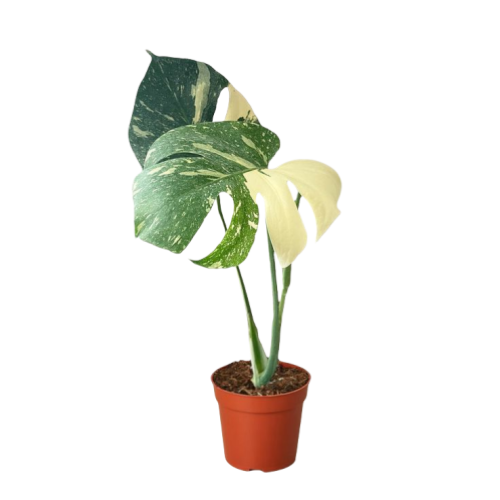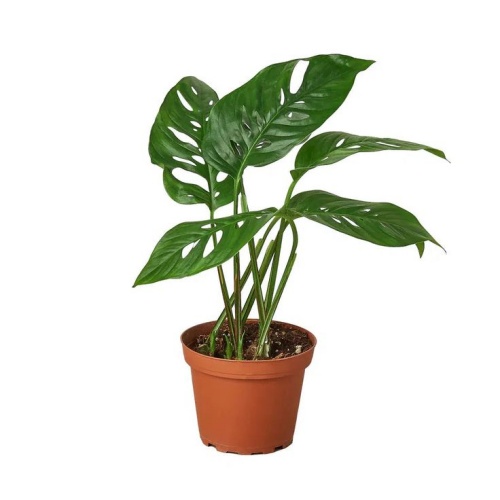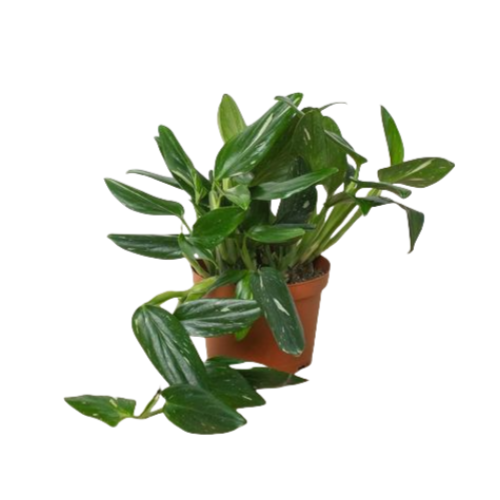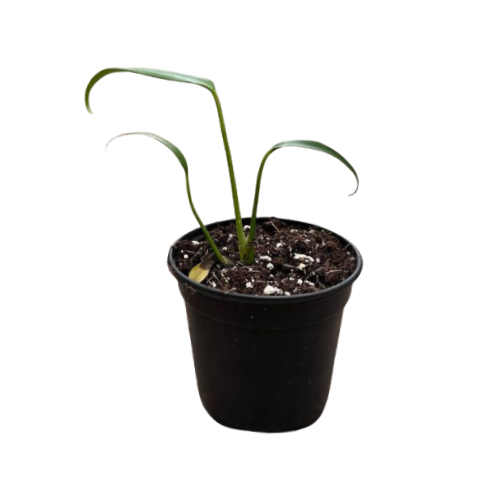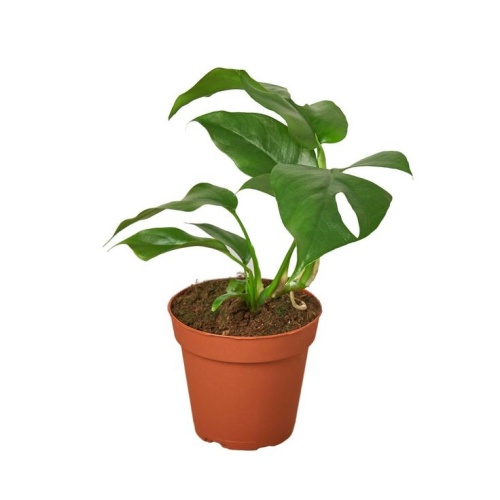Monsta Dubi
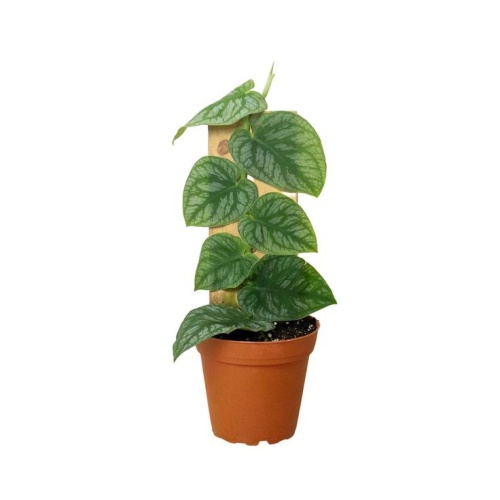
- Botanical Name: Monstera dubia
- Family Name: Araceae
- Ị ga: 3-10 Feet
- Okpomoku: 10℃~35℃
- Others: Light, 60%-80% humidity, fertile soil.
Nlebazi anya
Nkọwa nke ngwaahịa
Monsta Dubia: Ntughari nke okpomoku nke na-achịkwa oghere gị!
Missta Dubia: Ọkara na-agbanwe agbanwe nke nwere ihe na-acha ọcha!
Akwukwo ahihia na akpara azu
Monstera Dubia’s leaf color and shape change significantly as it grows. Young leaves are heart-shaped, covered with silvery-green variegation and dark green veins, making them look very unique. As the plant matures, the leaves gradually lose their silver variegation, turning into the typical deep green with characteristic Monstera fenestrations. This transformation from “silver sprite” to “mature leaf” is a hallmark of Monstera Dubia. Meanwhile, Monsta Dubi is a climbing vine with strong climbing abilities. Its stems are robust, and its aerial roots are well-developed, allowing it to cling tightly to supports like tree trunks or climbing frames. This characteristic enables it to grow upward along trees in its natural environment, forming a unique “shingle-like” growth pattern, which is why it is also called “Shingle Plant.”
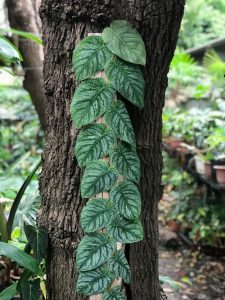
Monsta Dubi
Nkọwapụta Morphological
This plant is a highly distinctive tropical plant with rich morphological changes. In its juvenile stage, the leaves are heart-shaped with silvery-green variegation, closely adhering to the support, resembling a silver needle plant. As it matures, the leaves grow larger, lose their variegation, and develop into deep green fenestrated leaves, displaying the classic Monstera characteristics. Its strong stems and aerial roots allow it to climb upward, creating an elegant trailing effect. This “transformation” from juvenile to mature stage makes it not only an extremely ornamental plant but also a fascinating natural artwork.
Nchịkwa Monsta Dubia: itolite ike, Lee!
1. Ọ dị mkpa ìhè na ọnọdụ okpomọkụ
Monsta Dubia bụ osisi na-ekpo ọkụ na-enwe mmetụta na ọkụ na ọnọdụ okpomọkụ. Ọ chọrọ ìhè na-enweghị isi, na-ezere ìhè anyanwụ, nke nwere ike ịkacha akwụkwọ ya. Ike ọkụ dị mma bụ 300-500 fc, na 6-8 awa nke ọkụ kwa ụbọchị. Ezi ọkụ ezughi oke nwere ike ibute akwụkwọ iji tufuo ụdị na-eto eto na nke nwayọ. N'usoro nke okpomọkụ, Monsta Dubia na-ekpo ọkụ, na-ejikarị 65-80 ° F (18-27 Celsius C), na obere ọnọdụ okpomọkụ nke 15 Celsius. Obere oge nwere ike ime ka ihe ọkụkụ tinye dormancy ma ọ bụ nwụọ.
2. Ndụ iru mmiri, ala, na ịgbara mmiri
Monsta Dubia chọrọ gburugburu iru mmiri dị elu, na opekata mpe 60% na ezigbo mmalite nke 60% -80%. You nwere ike nwekwuo iru mmiri site na imehie, na-etinye osisi n'akụkụ ihu mmiri, ma ọ bụ iji mmiri mmiri. N'ihi ala, jiri nke ọma na-amịpụta mmiri, dị ka 30% na-ese ala, 30% orchid brog, 20% perlite, na 20% peat moschi. Nọgide na-ejide ala pH nke 5-7. Mgbe ị na-atọ mmiri, mee ka ala dị ntakịrị ma zere waterlogging. Mmiri na-agba mmiri na-abụkarị 1-2 ugboro kwa izu, dabere na iru mmiri na ọnọdụ okpomọkụ. Belata ịgbara mmiri n'oge oyi.
3
N'oge ọkọchị (oge opupu ihe ubi ruo oge ọkọchị), tinye fatịlaịza mmiri na-ewu ewu otu ugboro n'ọnwa, ma ọ bụ jiri nwayọ hapụ fatịlaịza ugboro atọ n'afọ. Zere ịkọ nri iji gbochie ụlọ nzukọ nnu. Missta Dubia bụ osisi vaịn na-arị ugwu ma chọọ ihe owuwu ihe dị ka Moss Pole, ma ọ bụ trellis. Ọ bụghị naanị na nke a na-eto eto ma na-eme ka uru ndị aka ya dị. Mgbe nile, trim nwụrụ ma ọ bụ mebiri emebi akwụkwọ iji kwalite uto ọhụrụ. Ọ bụrụ n'ịchọpụta akwụkwọ na-efunahụ ụdị dị iche iche n'ihi ezughi oke, mezie ọnọdụ ọkụ dị ka.
4. Njikwa Pesti na Atụmatụ Nlekọta
A na-etinye ụmụ ahụhụ nkịtị gụnyere udiri udiri, ụmụ ahụhụ na Meallybugs. Na-enyocha akwụkwọ ahụ mgbe niile ma gwọọ ọrịa ọ bụla na mmanụ ma ọ bụ mmanya. Iji mepụta gburugburu ebe obibi dị mma, memite ọnọdụ na-eto eto na-eto eto site na ịnọgide na-ekpo ọkụ, iru mmiri, na ìhè zuru oke. Ọ bụrụ na iru mmiri dị ala, na-atụle iji ihu igwe ma ọ bụ tinye osisi ahụ na mmiri mmiri. Site n'inweta ọnọdụ ndị a ma soro ndụmọdụ ndị a dị n'elu, Monsta Dubia agaghị eme nke ọma kamakwa tinye amara mara mma nke ahịhịa gị na ọdịdị ya.





